It's in your DNA
2017
The first year that I planted onions from seed, was the point in my life when I realized that I was completely incapable of doing anything on a small scale.
As I sat in my greenhouse staring at a sea of 400 little grassy seedlings, gently waving with each passing of the fans, a jolt of panic set over me. What had I done??? There were only two of us. How many onions can two people eat? And even more so, where oh where was I going to plant all of them?
I called my mother. Mind you, she had been recovering from a recent illness that left her in hospice and a brain full of fog. But I asked her anyway: "Why did I plant so many onions???"
She said in a monotone voice, “It’s in your DNA”.
So it is.
2025
I still plant way too many onions, but as they say, “go big or go home”. I’ve since added many more varieties to my yearly allium collection. I have three to four different types of onions, shallots - my kitchen favorite, and cipollini onions. I plant green onions that I’ve purchased from the grocery store and rerooted, leeks, and lots and lots and lots of garlic. I grow bunching onions that my aunt gave me, and chives from a plant my grandmother had planted almost 100 years ago on the family farm.
Growing onions is a deeply satisfying and rewarding part of gardening, but it doesn’t end there. The rewards reach deep into the winter months when the winds are howling outside and I don’t dare leave my house to go to the grocery store. Swapping clunky winter boots for fuzzy slippers, I'll bounce down the stairs to my basement where I store my precious, pungent beauties, and pick to my heart’s delight for whatever cozy concoction I’m making that evening.
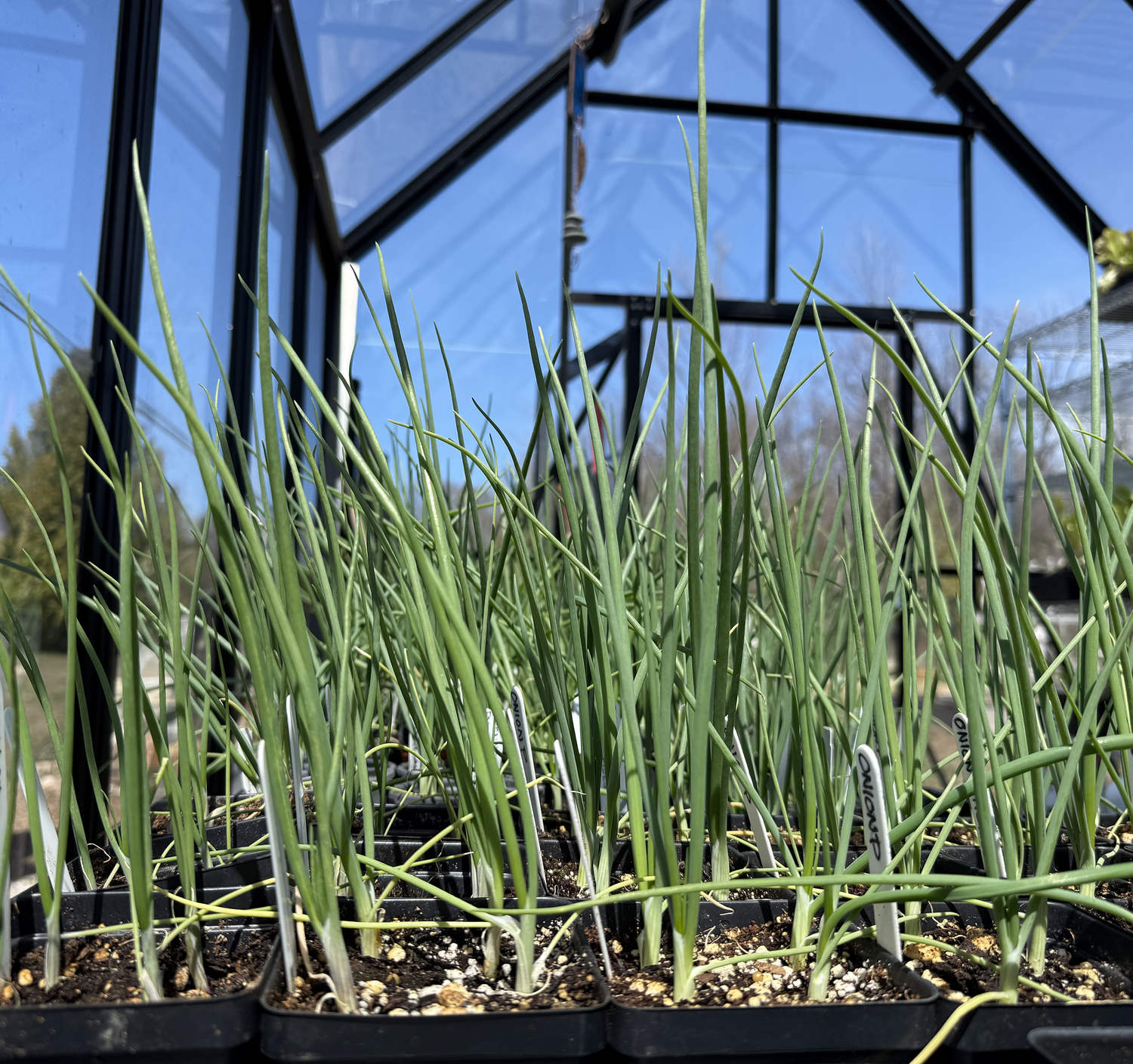
The Babies
I call the seedlings my babies. It's a fair label since I plant them in February, and by the time they go outside, I have been babying them for months.
The onions shown here are ready to go in the garden.
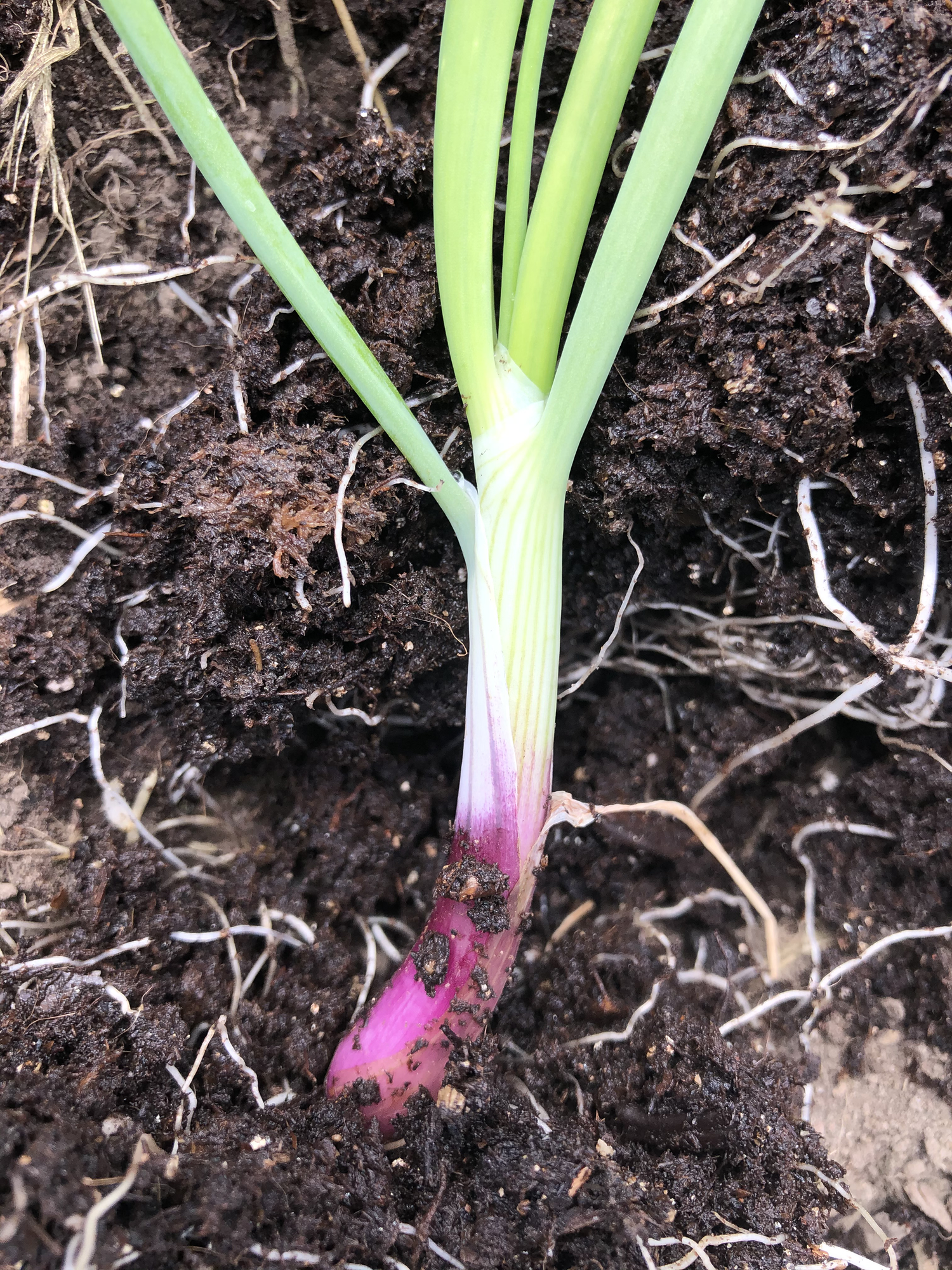
Time to plant
Planting onions is an easy task. They separate easily from each other - I plant four per pot. I dig a small hole with my trowel and plop the onions in. It's a quick process.
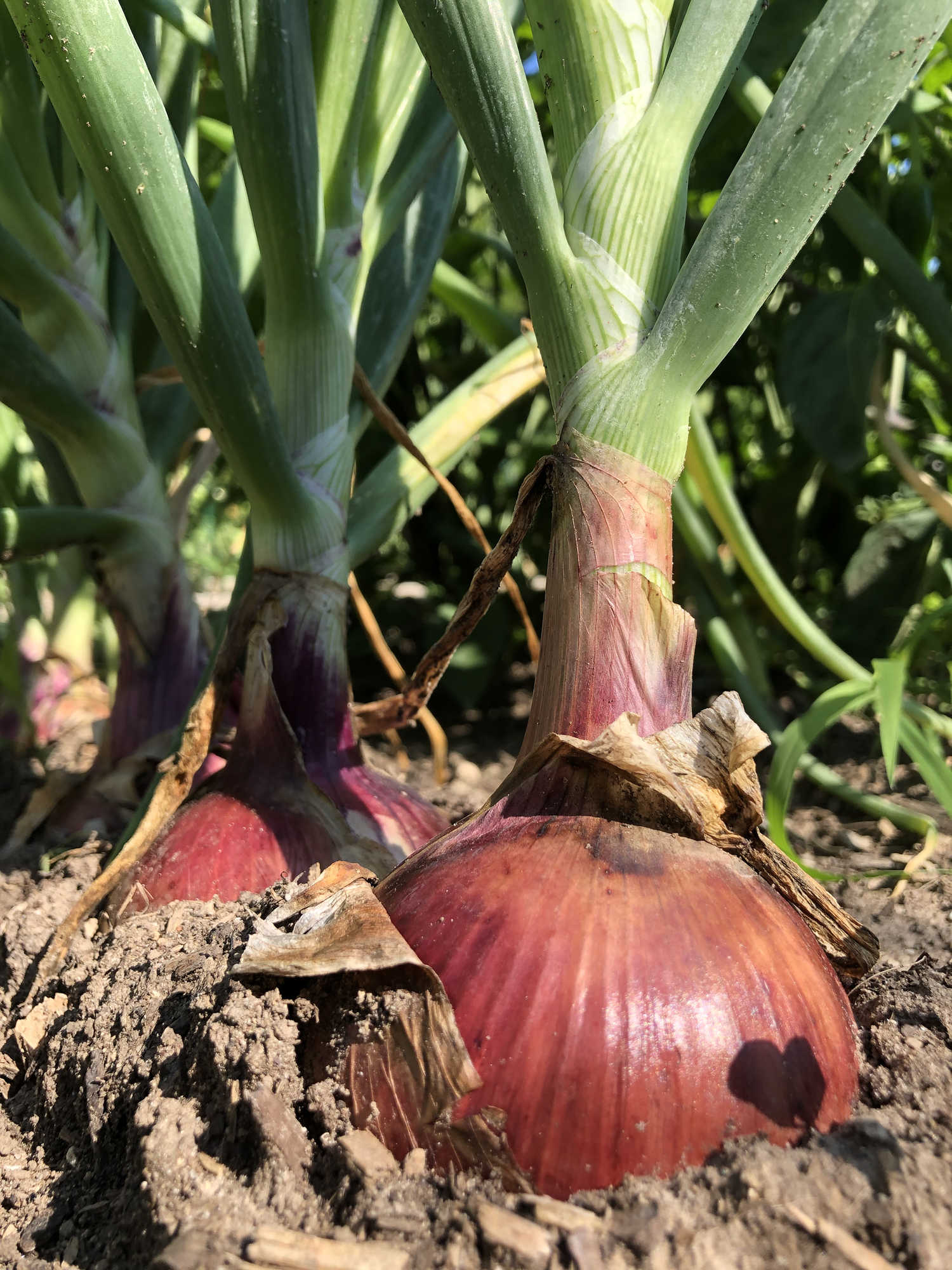
Forget About It
Once planted, onions are easy to grow. They don't ask for much attention. I give them some water, fertilizer, and plenty of sun.
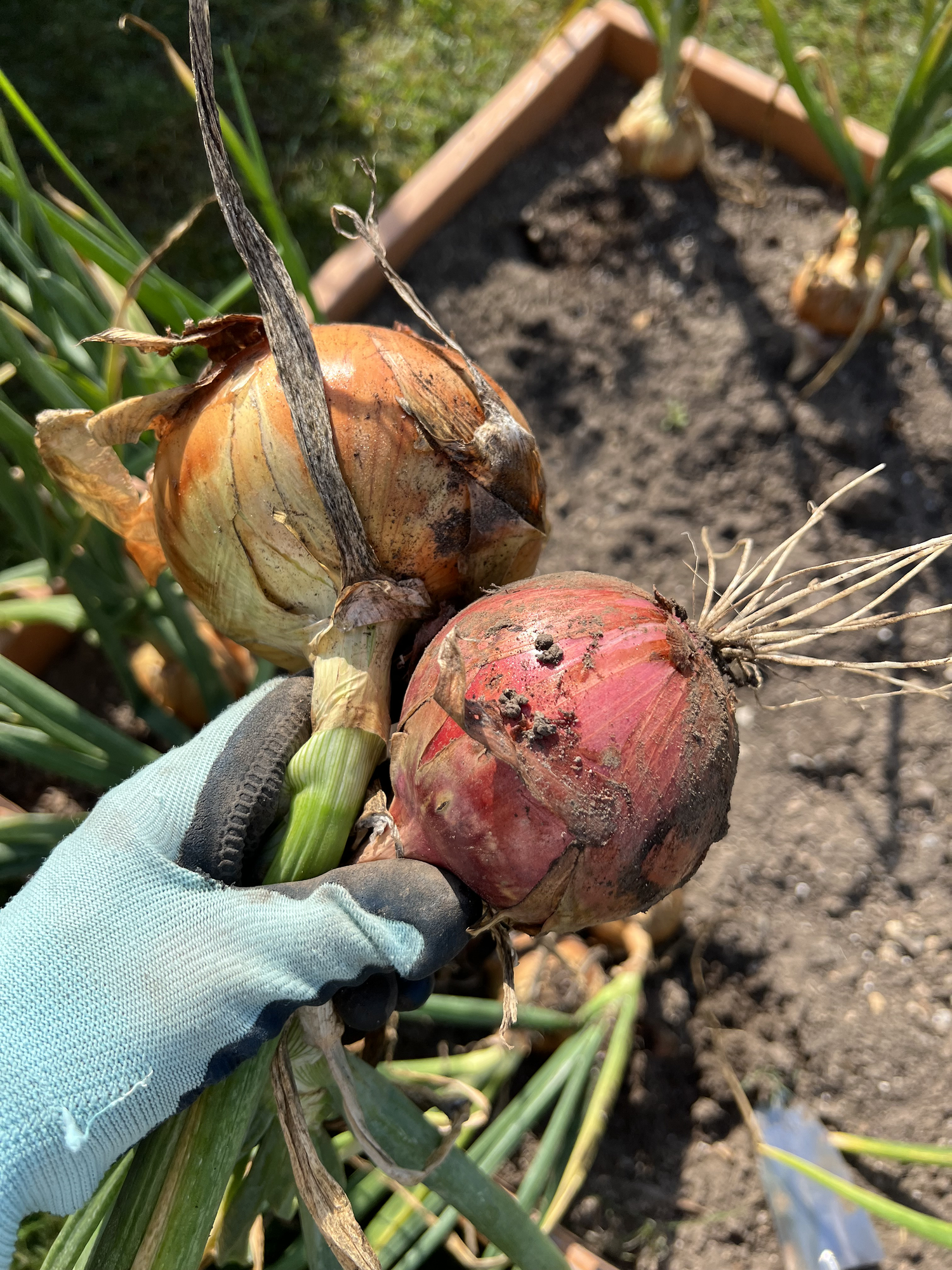
The Harvest
Harvesting onions is as easy as growing them. In July, when the bottom leaves begin to dry up and the stems soften and topple over, I begin my harvest. I simply loosen the soil around the onions and dig them up.
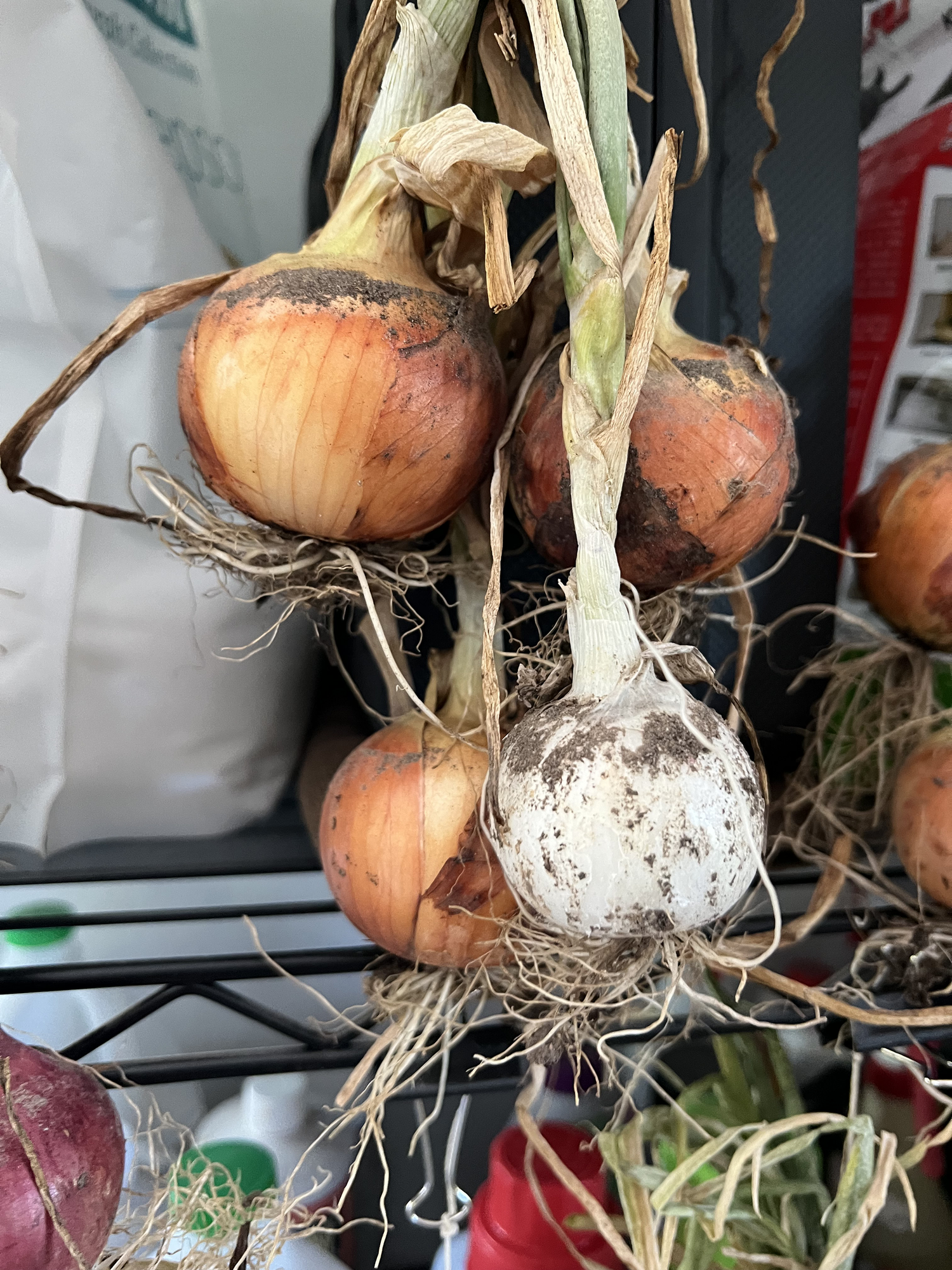
Curing the Onions for Storage
Once I've dug the onions up from their summer residence, it's time to cure them. The curing process causes them to go into dormancy, which is best for long-term storage.
To do this, I either tie them in bunches and hang them or lay them flat on a wire shelf in my warm garage, where the temperature is usually 75-80ºF during the summer months. This makes the space the perfect spot to cure the onions. They stay there for about two weeks until I move them to my 65ºF dry basement, where I will finish the harvest.
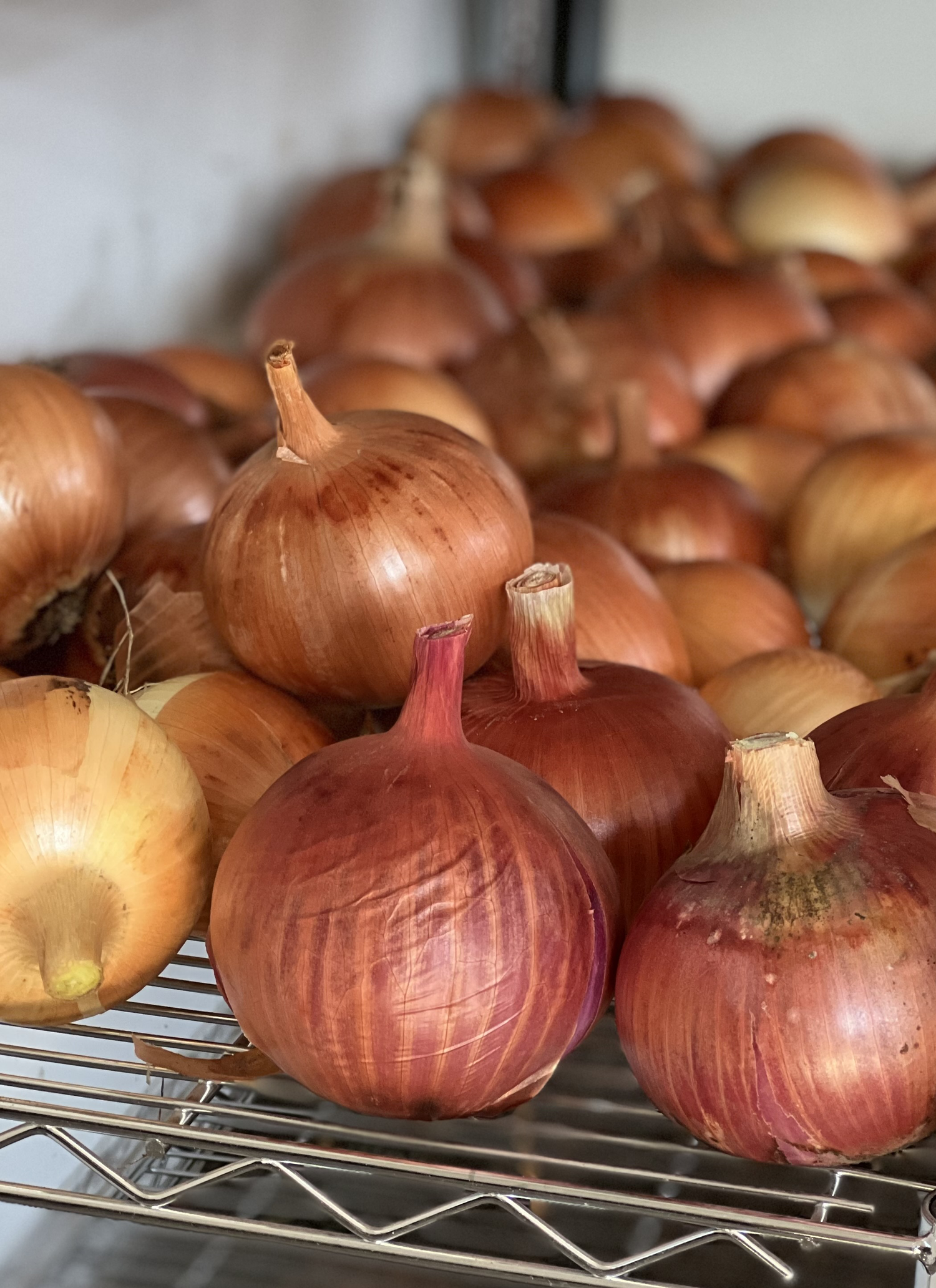
The Reward
Once in my basement, I let them sit even longer, occasionally inspecting them. When their stems are completely dry, I cut them to about 1-2 inches above the bulb and peel away some of the old, brittle outer skins. Now, these beautiful, plump gems are ready to use. Bon appétit!

